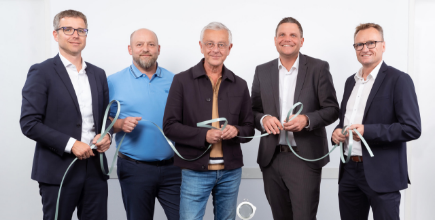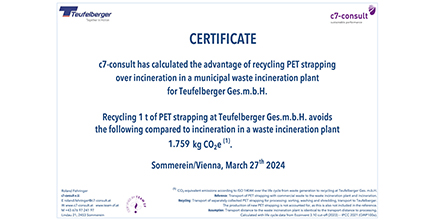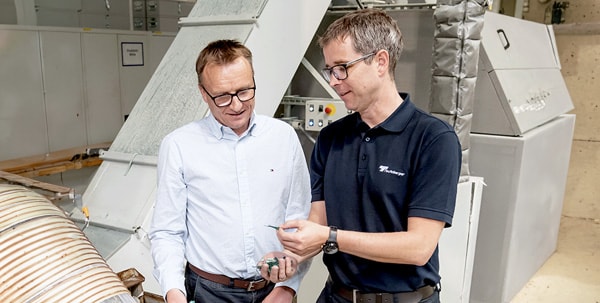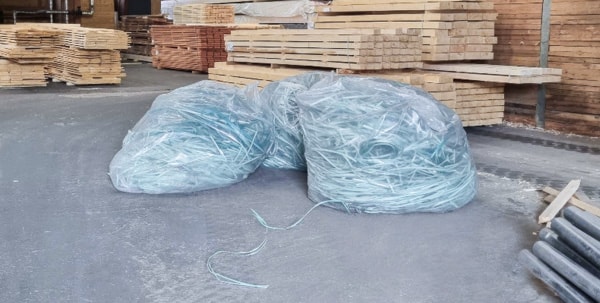Tips & Tricks.
Collecting
made easy.
Get the most out of each strap.
It saves money, effort, and resources: collecting, shredding, and compressing strapping bands. The snippets or bales can ideally be processed into new straps. But what should you keep in mind? We have put together the most important points for you.
Keep your materials seperate!
The most important aspect when sorting is the “purity" of the bands being collected. It’s hard to distinguish between PP and PET with the naked eye. However, there are a few tricks to see the difference:
PP strapping bands are usually narrower and lighter. They are also more flexible and can normally be cut with standard scissors. The most common PP strapping bands are white, blue, or black—though other colors are possible.
PET strapping bands are generally a bit wider and heavier, often green or black. These bands are stiffer and can often only be cut with difficulty without special tools.
The sink-float test helps.
Since color alone does not provide the best clue, distinguishing them can be challenging. Here, the sink-float test comes in handy! Due to the density of the plastics, the heavier PET material sinks, while PP floats on water!
Please, bands only!
It is also important that no other foreign substances such as cardboard, paper or film residues, labels, aluminum cans, screws, nuts, metal shavings, or other packaging or consumables end up in the collection. Only strap should be made from strap!
Two compressing options, so many benefits!
Strapping band shredder.
A band shredder effortlessly cuts all common plastic straps into small pieces, whether PP or PET. The straps are manually fed and automatically drawn in. The snippets fall out of the machine at the bottom and reduce the volume up to 30-fold. The pieces are collected in Big-Bags. Here, standard Big-Bags can be used—preferably reusable ones! We are happy to provide these upon request. Pick-up is done on pallets.
Balling press.
A baling press can also drastically reduce the volume of the material. Particularly when a lot of waste is generated, the press may be the better choice. Here, the band is compressed into bales under pressure and transported on pallets.
The right solution for everyone!
Both reduction and compaction options offer their own advantages—so the decision can be made depending on the case of use. The snippets are loose and can therefore be more easily processed into recycling in the following step. The bales, on the other hand, are more manageable in transport.
Whichever method suits you, one thing is certain: you will be part of a cycle full of benefits. For your company and the environment!


Any Question? Feel free to get in touch with us now.





